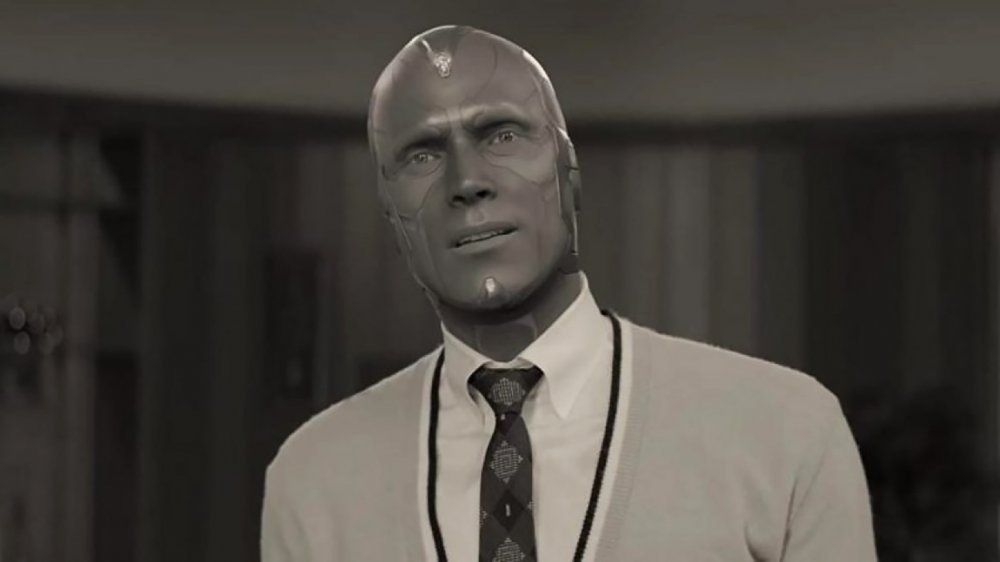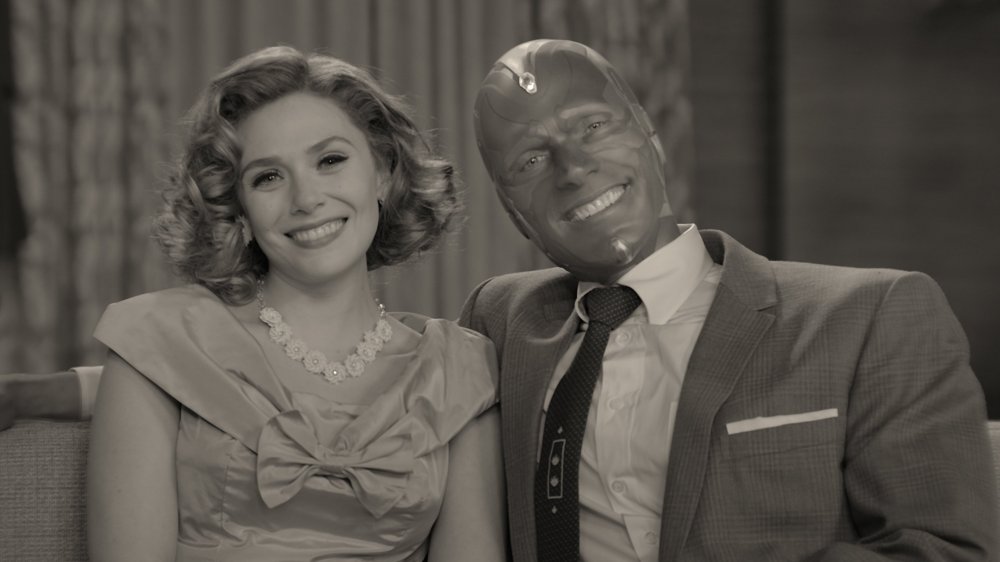The Reason Vision Was Painted Blue To Film WandaVision
WandaVision marks a bold step forward for the Marvel Cinematic Universe (MCU) as the world of the movies becomes intrinsically linked with Marvel's crop of Disney+ TV shows. It's only fitting that WandaVision, an ode to TV sitcoms through the decades, marks the beginning of Marvel's new phase. After all, Wanda Maximoff (Elizabeth Olsen) and Vision's (Paul Bettany) series is so committed to playing within the bounds of classic television that it even prompted a (temporary) change in Vision's trademark maroon color.
Vision is one of the MCU's most striking characters in terms of looks. The android's maroon-colored skin and metallic headgear really do make the character feel like a computer that has sprung to life somehow. However, it seems the combination of purple and red tones that give Vision his distinctive look didn't play well with the period lenses used to shoot WandaVision's black and white sitcom scenes.
As a result, Vision was temporarily given a Dr. Manhattan-esque makeover, according to Entertainment Weekly. In order to preserve the authenticity of the '50s era sitcom vibes the show was trying to capture, Bettany was painted blue for the scenes shot in black and white, rather than maroon, because blue looked better in grayscale.
Painting Vision blue was all part of making WandaVision look as much like a classic sitcom as possible
Disney+ is keeping most of WandaVision's plot details a secret. All we know going in is that Wanda and Vision are living in a sitcom reality where they're trying to hide their powers from nosy neighbors like Kathryn Hahn's Agnes. There will definitely be more to the story — perhaps even something a bit sinister — but above all else, Marvel Studios president Kevin Feige wanted WandaVision to be entrenched in the world of family sitcoms.
For the show's behind-the-scenes team that directive meant committing entirely to era appropriate special effects, which included Vision's blue transformation for the sake of the cameras to the use of wires to make objects move around the set when Wanda uses her witchy powers (think Bewitched). The commitment to authenticity even extended itself to the pilot episode being filmed in front of a live studio audience, despite the risk of spoilers getting out.
As if there was any doubt about Feige and WandaVision director Matt Shakman's dedication to the show's aesthetic, they even turned to vetern sitcom star Dick Van Dyke for advice on how to nail the unique tone of old school sitcoms. "[The Dick Van Dyke Show] can be very broad with silly physical-comedy gags, and yet it never feels false, and I wondered how they did that," Shakman explained to EW. "His answer was really simple: He basically said that if it couldn't happen in real life, it couldn't happen on the show."
Shakman implemented that philosophy throughout filming with the hopes that at the end of the day, WandaVision would feel as much like a throwback to the sitcoms of television's past as it does a giant leap forward for storytelling in the MCU.

